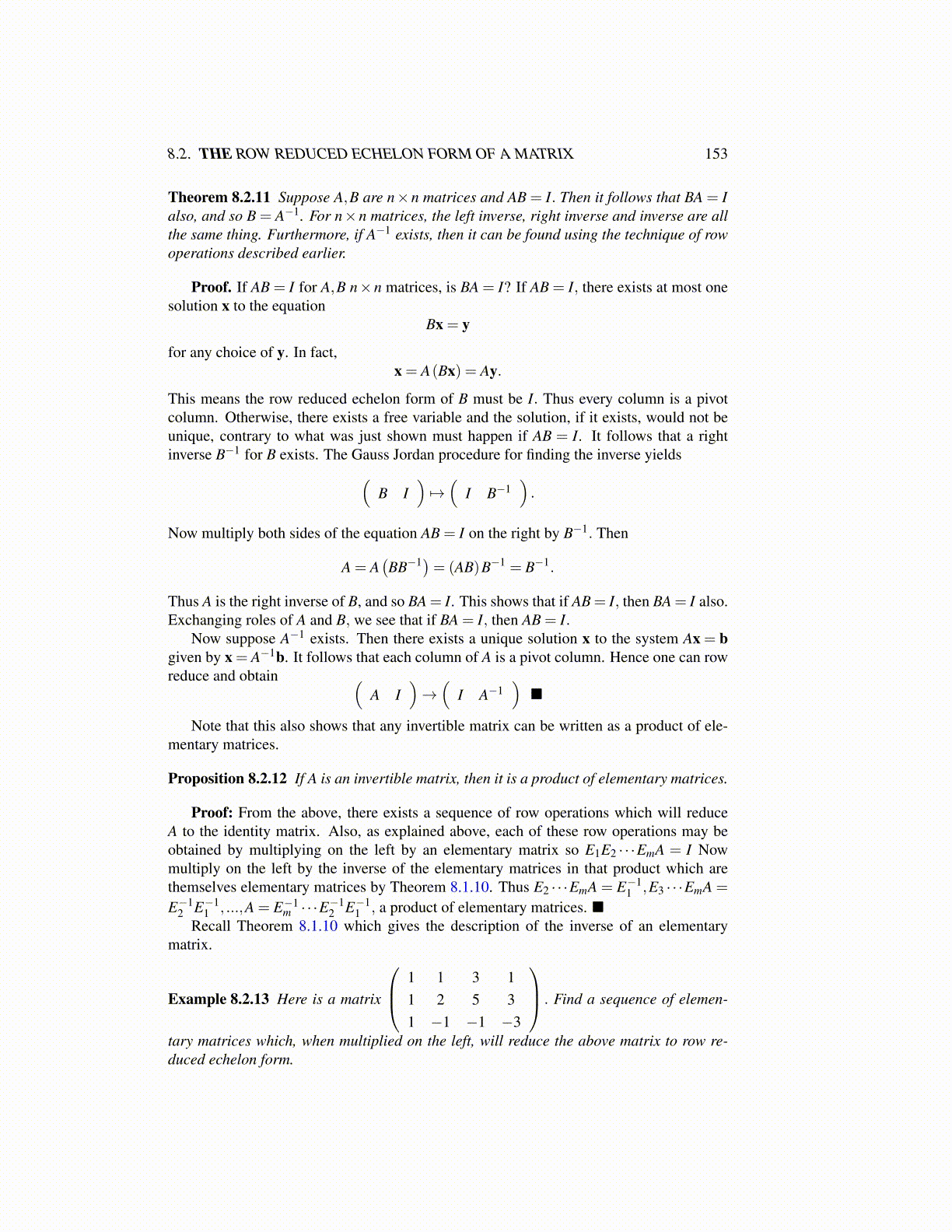
8.2. THE ROW REDUCED ECHELON FORM OF A MATRIX 153
Theorem 8.2.11 Suppose A,B are n×n matrices and AB = I. Then it follows that BA = Ialso, and so B = A−1. For n×n matrices, the left inverse, right inverse and inverse are allthe same thing. Furthermore, if A−1 exists, then it can be found using the technique of rowoperations described earlier.
Proof. If AB = I for A,B n×n matrices, is BA = I? If AB = I, there exists at most onesolution x to the equation
Bx = y
for any choice of y. In fact,x = A(Bx) = Ay.
This means the row reduced echelon form of B must be I. Thus every column is a pivotcolumn. Otherwise, there exists a free variable and the solution, if it exists, would not beunique, contrary to what was just shown must happen if AB = I. It follows that a rightinverse B−1 for B exists. The Gauss Jordan procedure for finding the inverse yields(
B I)7→(
I B−1).
Now multiply both sides of the equation AB = I on the right by B−1. Then
A = A(BB−1)= (AB)B−1 = B−1.
Thus A is the right inverse of B, and so BA = I. This shows that if AB = I, then BA = I also.Exchanging roles of A and B, we see that if BA = I, then AB = I.
Now suppose A−1 exists. Then there exists a unique solution x to the system Ax = bgiven by x = A−1b. It follows that each column of A is a pivot column. Hence one can rowreduce and obtain (
A I)→(
I A−1)
■
Note that this also shows that any invertible matrix can be written as a product of ele-mentary matrices.
Proposition 8.2.12 If A is an invertible matrix, then it is a product of elementary matrices.
Proof: From the above, there exists a sequence of row operations which will reduceA to the identity matrix. Also, as explained above, each of these row operations may beobtained by multiplying on the left by an elementary matrix so E1E2 · · ·EmA = I Nowmultiply on the left by the inverse of the elementary matrices in that product which arethemselves elementary matrices by Theorem 8.1.10. Thus E2 · · ·EmA = E−1
1 ,E3 · · ·EmA =
E−12 E−1
1 , ...,A = E−1m · · ·E−1
2 E−11 , a product of elementary matrices. ■
Recall Theorem 8.1.10 which gives the description of the inverse of an elementarymatrix.
Example 8.2.13 Here is a matrix
1 1 3 11 2 5 31 −1 −1 −3
. Find a sequence of elemen-
tary matrices which, when multiplied on the left, will reduce the above matrix to row re-duced echelon form.